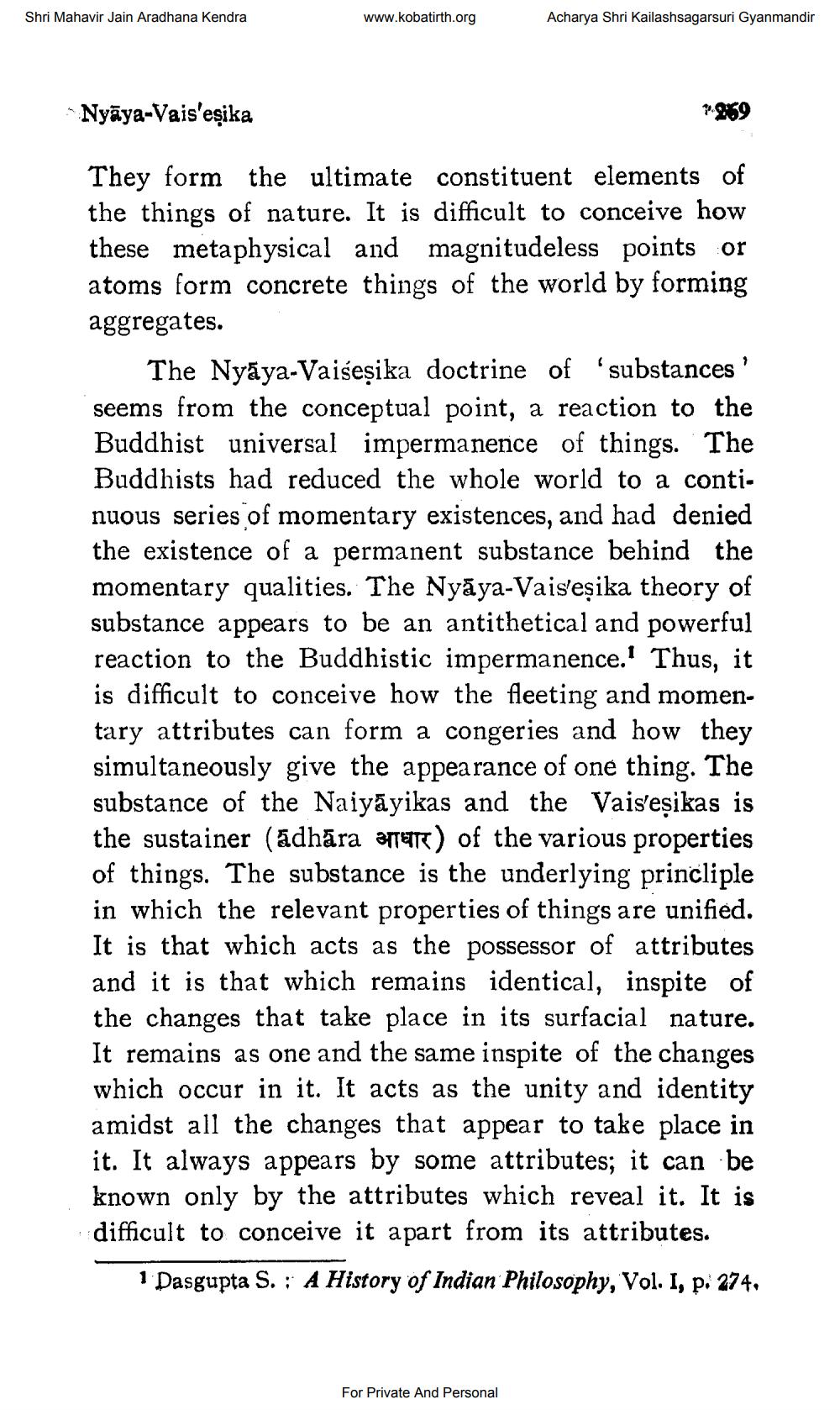________________
Shri Mahavir Jain Aradhana Kendra
www.kobatirth.org
Acharya Shri Kailashsagarsuri Gyanmandir
Nyaya-Vais'eşika
They form the ultimate constituent elements of the things of nature. It is difficult to conceive how these metaphysical and magnitudeless points or atoms form concrete things of the world by forming aggregates.
For Private And Personal
*.969
The Nyaya-Vaiseṣika doctrine of 'substances' seems from the conceptual point, a reaction to the Buddhist universal impermanence of things. The Buddhists had reduced the whole world to a continuous series of momentary existences, and had denied the existence of a permanent substance behind the momentary qualities. The Nyāya-Vais'eṣika theory of substance appears to be an antithetical and powerful reaction to the Buddhistic impermanence. Thus, it is difficult to conceive how the fleeting and momentary attributes can form a congeries and how they simultaneously give the appearance of one thing. The substance of the Naiyayikas and the Vais'eşikas is the sustainer (adhāra ) of the various properties of things. The substance is the underlying princliple in which the relevant properties of things are unified. It is that which acts as the possessor of attributes and it is that which remains identical, inspite of the changes that take place in its surfacial nature. It remains as one and the same inspite of the changes which occur in it. It acts as the unity and identity amidst all the changes that appear to take place in it. It always appears by some attributes; it can be known only by the attributes which reveal it. It is difficult to conceive it apart from its attributes.
1 Dasgupta S.: A History of Indian Philosophy, Vol. I, p. 274.




